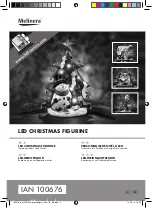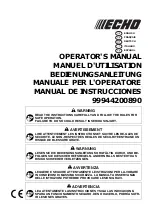
7 - Appendix
MIDI Time Code (MTC)
122
Creative Professional
MIDI Time Code (MTC)
MTC and SMPTE do
NOT synchronize at the
sample rate and are not
locked to word clock in
any way.
SMPTE and MTC are used
to synchronize music but
do not have the required
resolution to sample-lock
digital audio.
MIDI time code is basically SMPTE time code adapted to the world of MIDI. MTC
specifies “absolute” location information in hours:minutes:seconds:frames, just like
SMPTE. There are two main kinds of messages in MTC: Full-frame messages and
Quarter-frame messages.
Full-frame messages are ten bytes long and are sent when SMPTE start, stops, or
relocates. Full-frame messages contain the entire SMPTE number of, hours, minutes,
seconds, frames, as well as the SMPTE type: 24fps, 25fps, 30fps non-drop, 30fps drop.
Quarter-frame messages are sent at each quarter of a SMPTE frame and only carry 1/8th
of the SMPTE time message. Quarter-frame messages require two entire SMPTE frames
to send the complete time stamp (h:m:s:f). Timing accuracy is maintained as long as the
quarter-frame messages continue to come in at a constant rate.
To Enable MTC:
MIDI Time code disables the use of MIDI port 2 on the back panel of the AudioDock.
1.
Open
Session Settings
from the toolbar.
2.
Select the
MIDI
tab and choose
Sync Card/MTC
from the MIDI options.
3.
Click
OK
to close the window.
Since it is important to have a stable timing reference for your song or sequence, we
have given MTC its own MIDI output port on the Sync Daughter Card. This ensures that
the timing information will not be affected by other MIDI data on the line.
Word Clock In/Out
f
Word clock, ADAT and
S/PDIF synchronize at the
sample rate and are used
to transfer digital data
between machines.
Word clock provides a standardized means of synchronizing multiple digital audio
devices so that data can be transferred digitally.
In order to digitally transfer from one
device to another, the two devices MUST be synchronized.
Clicks and pops in the
audio will result when transferring digital audio which is not synchronized.
The E-MU 1010 PCI card can be externally clocked from the ADAT input, S/PDIF input
or from the Sync Daughter card (if installed).
In a digital studio, all digital devices in
the system should run off the same master Word Clock
.
To Synchronize PatchMix DSP to an External Clock Source:
1.
Make sure an external clock source is connected to the E-MU Digital Audio System
hardware via the word clock, ADAT or S/PDIF input.
2.
Open the
Session Settings
dialog box.
3.
Under the
System
tab, select
External Source
, then select either
word clock, ADAT
or
S/PDIF
.
4.
Press
OK
to close the dialog box.
5.
Check the
Sync
section of PatchMix DSP to verify that the
Locked
indicator is
illuminated.
Devices can be connected in daisy chain fashion (word clock out connected to the next
unit’s word clock in) or in parallel for one or two devices, but professional digital
studios normally use a master word clock generator or “House Sync” with a distribution
system so that each device receives a phase-coherent and jitter-free word clock.
Summary of Contents for 1212M
Page 1: ...1820 1820 Owner s Manual Owner s Manual ...
Page 8: ...8 E MU 1820M 1820 1212M PCI Digital Audio System ...
Page 54: ...4 The PatchMix DSP Mixer Main Section 54 Creative Professional ...
Page 110: ...5 Effects E MU E Wire VST 110 Creative Professional ...
Page 116: ...6 Using High Sample Rates Overview 116 Creative Professional ...
Page 138: ...7 Appendix Internet References 138 Creative Professional ...















































